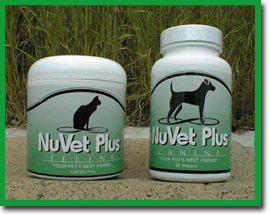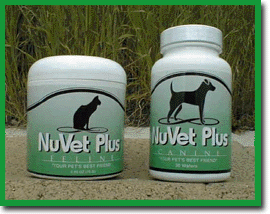QuestionI have a 6 year old Lab/Catahoula mix (105 lb.) who was diagnosed with struvites at age 2. She has been on Hill's C/D for about 4 years. She is also prone to UTI's, most recently 3 weeks ago. Her urinalysis at that time did not show struvites, however. She is given 3 cups of the Hill's C/D, one cup at each of three feedings daily. She also is taking 500mg. vitamin C, and 50 mg Uricon daily. I have also started giving her 2400 u. Fish oil daily. I would like to take her off the C/D because I don't feel it's the best nutrition for her, but I don't want her to get into trouble with crystals, either. I would appreciate any suggestions you may have. Thanks!
AnswerGood afternoon, Nina.
I'm sorry your girl has had problems with struvites.
Your vet has her on Uricon, does she have problems with incontinence?
The following study was performed on cats, however, we have found the same to be relevant for dogs:
OBJECTIVE: To evaluate effects of dietary carbohydrate on urine volume; struvite crystal formation; and calcium, phosphorus, and magnesium balance in clinically normal cats. ANIMALS: 21 healthy adult cats (15 sexually intact males and 6 sexually intact females). PROCEDURE: Diets containing no carbohydrate source (control diet), control plus starch, or control plus fiber were given in a 3 X 3 Latin-square design. The diets were available ad libitum in study 1 (n = 12) and given under restrictions in study 2 (9) to equalize daily intakes of crude protein among the 3 groups. Formation of struvite crystals and balance of calcium, phosphorus, and magnesium were measured. RESULTS: Urine volume was lower in the starch group and fiber group in study 1, whereas no differences were detected among the groups in study 2. Urinary pH and struvite activity product were higher in the starch group in both studies, and the fiber group also had higher struvite activity product in study 2. In both studies, urinary concentrations of HCl-insoluble sediment were higher in the starch group and fiber group. In the fiber group, a net loss of body calcium, phosphorus, and magnesium was detected in study 2. CONCLUSIONS AND CLINICAL RELEVANCE: Starch and fiber in diets potentially stimulate formation of struvite crystals. Hence, reducing dietary carbohydrate is desirable to prevent struvite urolith formation. In addition, a net loss of body calcium, phosphorus, and magnesium during feeding of the fiber diet suggests that dietary inclusion of insoluble fiber could increase macromineral requirements of cats.
I will explain further that grains are high in phytates, which do bind to minerals, not allowing them to be absorbed by the body. Studies also suggest that in addition to the binding action of the phytates, they can also leach minerals from the body, which are excreted in urine (this would explain the net loss of body calcium, phosphorus and magnesium). This problem is exacerbated when feeding a dry diet because the volume of urine passed is reduced when feeding a dry diet, making it difficult for the body to flush out the excess of minerals.
Feeding a natural diet greatly reduces the risk of crystals, at the very least, a good canned diet free of grains and low in carbohydrates and fiber.
It is also wise to add a good quality probiotic as this has been found to be beneficial in maintaining healthy urinary PH.
I do hope this has be of some help. Please feel free to contact me if you have any other questions.
Gail E. Vigneault

 Collapsed Trachea Yorkie; pet Nurse Marie can help yorkies...!
Question
Me and toby
Hey I have a yorkie named toby and
Collapsed Trachea Yorkie; pet Nurse Marie can help yorkies...!
Question
Me and toby
Hey I have a yorkie named toby and
 chihuahua with loose stool
Questionhello, i have been doing alot of research and f
chihuahua with loose stool
Questionhello, i have been doing alot of research and f
 american pitbull feeding ; recipes for pitbull food;
QuestionI have a 3 year American Pit. She has had itchy
american pitbull feeding ; recipes for pitbull food;
QuestionI have a 3 year American Pit. She has had itchy
 Mastiff Cane Corso vitamins and food; Nutro review;
QuestionKaiah is my new pup :) She is eating Nutro Naur
Mastiff Cane Corso vitamins and food; Nutro review;
QuestionKaiah is my new pup :) She is eating Nutro Naur
 Salmon oil vitamin supplements
QuestionQUESTION: I have 3 dogs...50lb mutt, 80lb gsd a
Salmon oil vitamin supplements
QuestionQUESTION: I have 3 dogs...50lb mutt, 80lb gsd a